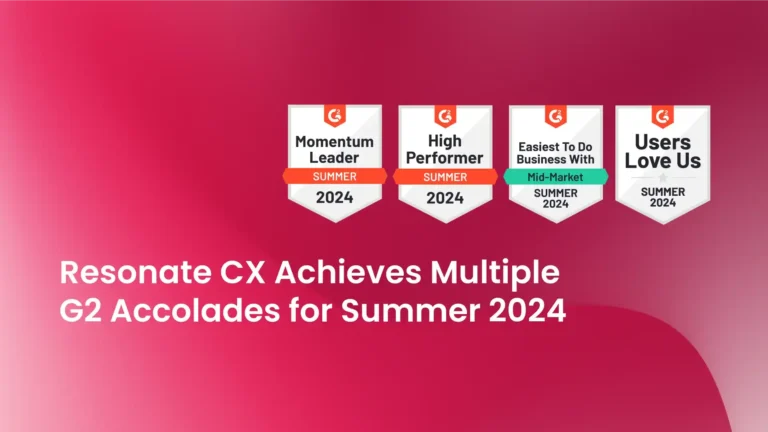In the evolving landscape of Customer Experience (CX), the role of feedback is pivotal. Among various feedback mechanisms, the closed-loop feedback system emerges as one of the most effective. In this blog, we will unpack its transformative power and showcase examples where it’s made a genuine impact.
Closed Loop Feedback
What is closed loop feedback?

Peter Shankman was on a 4pm flight from Tampa to Newark, anticipating he wouldn't have time for dinner upon arrival. On a whim, he tweeted a playful request to Morton’s Steakhouse, asking if they could deliver a porterhouse steak to Newark Airport in two hours. To his surprise, when he landed, a formally dressed Morton's representative greeted him with a steak meal. Morton's staff had spotted the tweet, arranged the meal from a nearby branch, and used flight details to meet Shankman at the airport, all within a tight three-hour window.
Some companies really go the extra mile to pleasing their customers. Like Peter, we all have our stories to share about a time we experienced exceptional service. These moments are always memorable, and on the other side of the spectrum, we have experiences in a place we would never do business with again after a terrible experience.
At its core, closed loop feedback is about completing the communication circle. When a customer provides feedback, it’s taken onboard, analyzed, and acted upon. After this, the customer is informed about the measures taken based on their feedback. This not only acknowledges their input but also builds trust.
What is an example of a closed-loop feedback system?
Let’s jump from Peter’s experience to tech. Have you ever left a review on an app in the app store? You point out a bug. A few weeks later, not only is the bug fixed in the latest update, but the developer even reaches out to thank you for pointing it out. That is an instance of a closed-loop feedback system at work.
Or take a look at this classic example of a review from a three-year old girl named Lily, about the Sainsbury’s Tiger Bread:

(Source: Sainsbury’s)
A customer service representative by the name of Chris King thoughtfully responded to this inquisitive three-year old girl, suggesting, “I think renaming tiger bread giraffe bread is a brilliant idea—it looks much more like the blotches on a giraffe than the stripes on a tiger doesn’t it?”

(Source: BBC News)
With his response, he gave a £3 gift card and humorously signed off as “Chris King (age 27 & 1/3)”.
Some time after, influenced by the young customer’s insight, Sainsbury’s changed the name of their tiger bread to giraffe bread.
“In response to overwhelming customer feedback that our tiger bread has more resemblance to a giraffe, from today we will be changing our tiger bread to giraffe bread and seeing how that goes,” the supermarket said.
Sailsbury’s is a brand that continues to be recognized as a household name as they focus on their customers’ feedback and needs.
“Knowing and understanding our customers better than anyone else is fundamental to our success,” Sainsbury’s said.
Open loop vs closed loop feedback
With open and closed loop feedback, the differentiation is straightforward:
- Open-loop feedback: operates on a one-way street. Feedback is provided, but there’s no subsequent communication or evident action.
- Closed-loop feedback: is a two-way communication channel. Feedback is given, action is taken, and then the customer is informed or consulted, completing the cycle.
Open-loop feedback is like shouting into a void. You give your feedback, but who knows where it goes? Closed-loop feedback, on the other hand, is like having a conversation. You talk, you’re heard, and then there’s a meaningful response.
Inner Loop vs Outer Loop
We hope we haven’t twisted your brain yet with all these loops! The inner loop and outer loop are essentially the two components of closed-loop feedback:
- Inner Loop: This pertains to the immediate actions taken based on individual feedback. It addresses specific customer issues or concerns directly and promptly.
- Outer Loop: This deals with more systemic feedback patterns. If multiple customers share a similar concern, the outer loop identifies this pattern and prompts broader organizational changes.
What are the benefits of closed-loop feedback?
Service Recovery
Chain Store Age states that nearly half (49%) of consumers abandons a brand because of poor customer experience. A closed-loop system allows businesses to swiftly address issues, turning potential detractors into advocates. Instead of a customer stewing over an issue, they get a resolution, often making them even more loyal than before!
Capturing feedback also allows organizations to understand which customers they have failed badly. 83% of consumers say they stick with brands that listen to their problems and respond to them, based on Khoros’s Getting To Know Your Customers Report. Closing the loop with these customers is essential as it allows an organization to recover and still protect revenue (e.g. stop a customer churning away) as well as understand in detail the real pain points of the experience for customers.
Identifying Bright Spots
It’s not all about fixing the negatives. Recognizing what’s working well – the “bright spots” – can offer a roadmap for replicating success across the board. We find that promoters will less likely to provide details about the particulars of the experience that they really enjoyed, and instead are just leaving statements such as “It was excellent” or “Everything was great”.
Closing the loop with customers and calling them back allows frontline managers to really understand which parts of the experience or which staff are creating promoters. These bright spots can then be replicated elsewhere.
Idea Generation
Speaking to customers allows managers to brainstorm what can be done to improve the experience. Some customers have actually thought through what would make the experience great and can provide innovative ideas. 90% of global executives who use data analytics report that it’s helped them enhance the customer experience.
Additionally, it provides a place to test out new ideas with customers, ask if the changes being planned would make a real difference to them or are they off the mark.
Cultural Change
Closing the loop with customers requires conversations with customers beyond the frontline staff. According to Forbes, companies that lead in customer experience outperform those that don’t by almost 80%. When managers and executives are making calls to customers it grounds the organization on what is really important – providing products/services to the customer. In fact, 64% of companies with a customer-first CEO believe they are more profitable than their competitors. C-level executives closing the loop with customers shows the organization that the customer is important and that the organization is “walking the talk” when it comes to improving advocacy.
Closed loop feedback system and how it works
Now that you know the benefits of closed-loop feedback, how does it work? Let’s take a look:
- Feedback Inception: This is the moment a customer (like you, me, or our friend Peter and Lily) shares some valuable insights or comments.
- Analysis & Action: Brands, just like our heroes at Morton’s, swing into action. They analyze this feedback, cook up a solution, or in Peter’s case, an actual steak.
- Completion: Finally, the brand reaches back out, making sure you know they’ve taken your feedback to heart. It’s like getting the ball back after you’ve thrown it—full circle!
How to build a closed-loop feedback program
Crafting a stellar closed-loop feedback program isn’t as challenging as assembling IKEA furniture. And if you’re still scratching your head about where to start, don’t fret. Let’s break it down into a four-step journey to craft a stellar feedback mechanism for your organization.

- Listen: Embrace feedback like it’s your favorite song. Whether it’s compliments or constructive criticism, keep those ears perked up.
- Act: The quicker you respond, the better. A timely acknowledgment, even before the final resolution, can be instrumental in enhancing customer satisfaction.
- Discover: Feedback often carries underlying patterns and trends. Analyzing them can unearth invaluable insights for strategic decision-making. Utilize analytics tools to identify recurring themes or prevalent sentiments within feedback.
- Improve: Feedback is a gift that keeps on giving. Use it to continually refine your process, product, or service. Track customer reactions post-change to gauge the efficacy of implemented modifications.
Close the loop with Resonate
Closed-loop feedback isn’t just about addressing concerns; it’s about building relationships. So, whether you’re on the giving or receiving end, remember, it’s all about the circle of trust and feedback.
Speaking of stellar tools to aid your feedback journey, Resonate is your all-in-one platform designed specifically for businesses that want to ace the closed-loop feedback game. From gathering insights to ensuring communication flows smoothly, Resonate is always there to ensure you’re on the right track. We believe that organizations profit by listening to their customers at critical moments and acting systematically to create advocates.
Ready to close the loop with Resonate?
Close the customer feedback loop once and for all.







